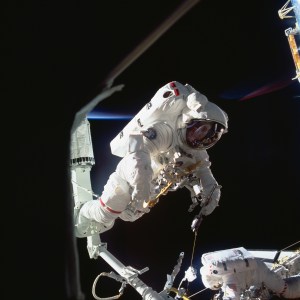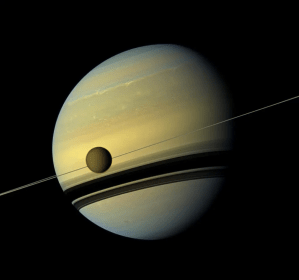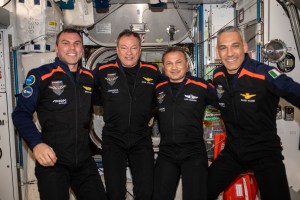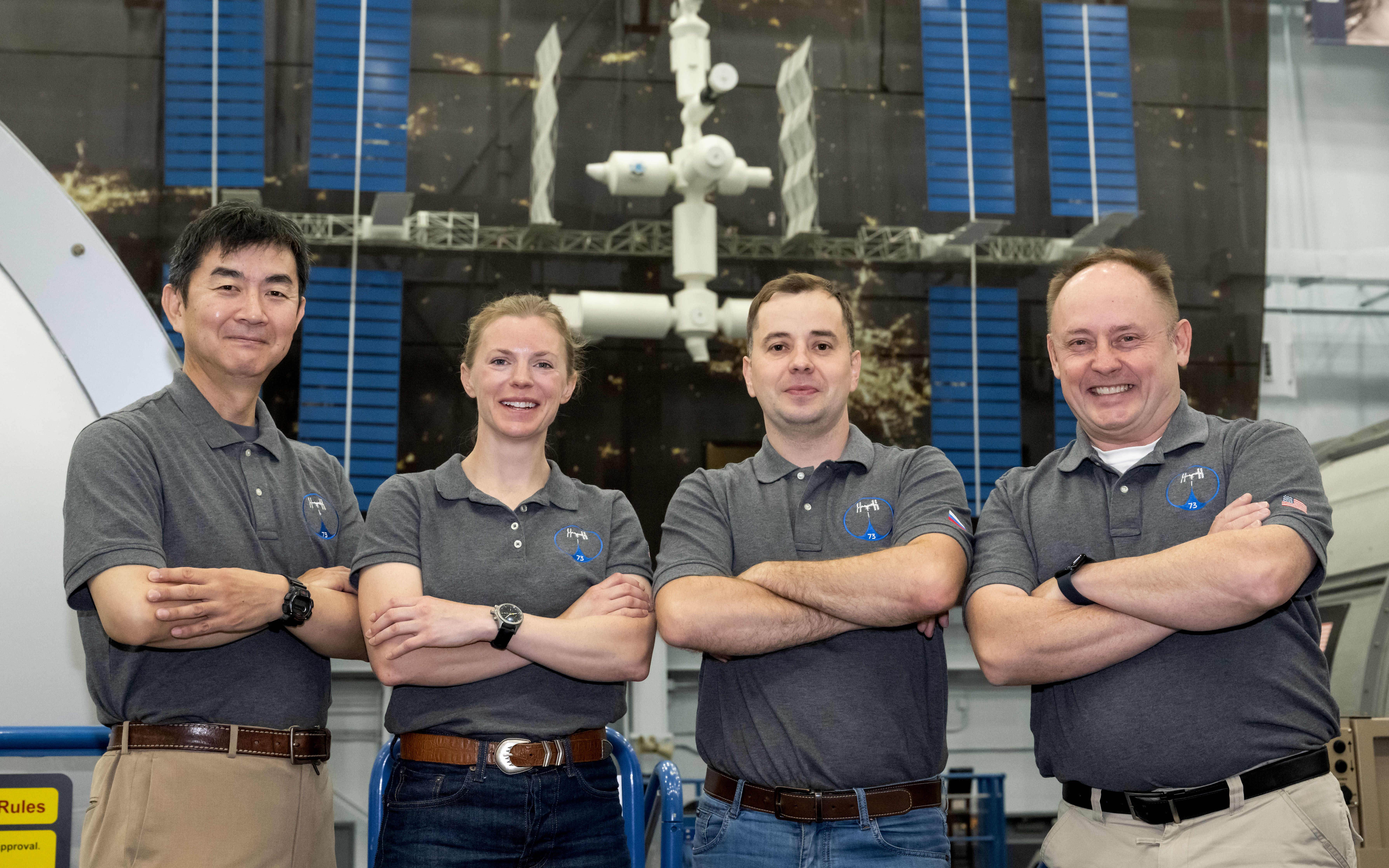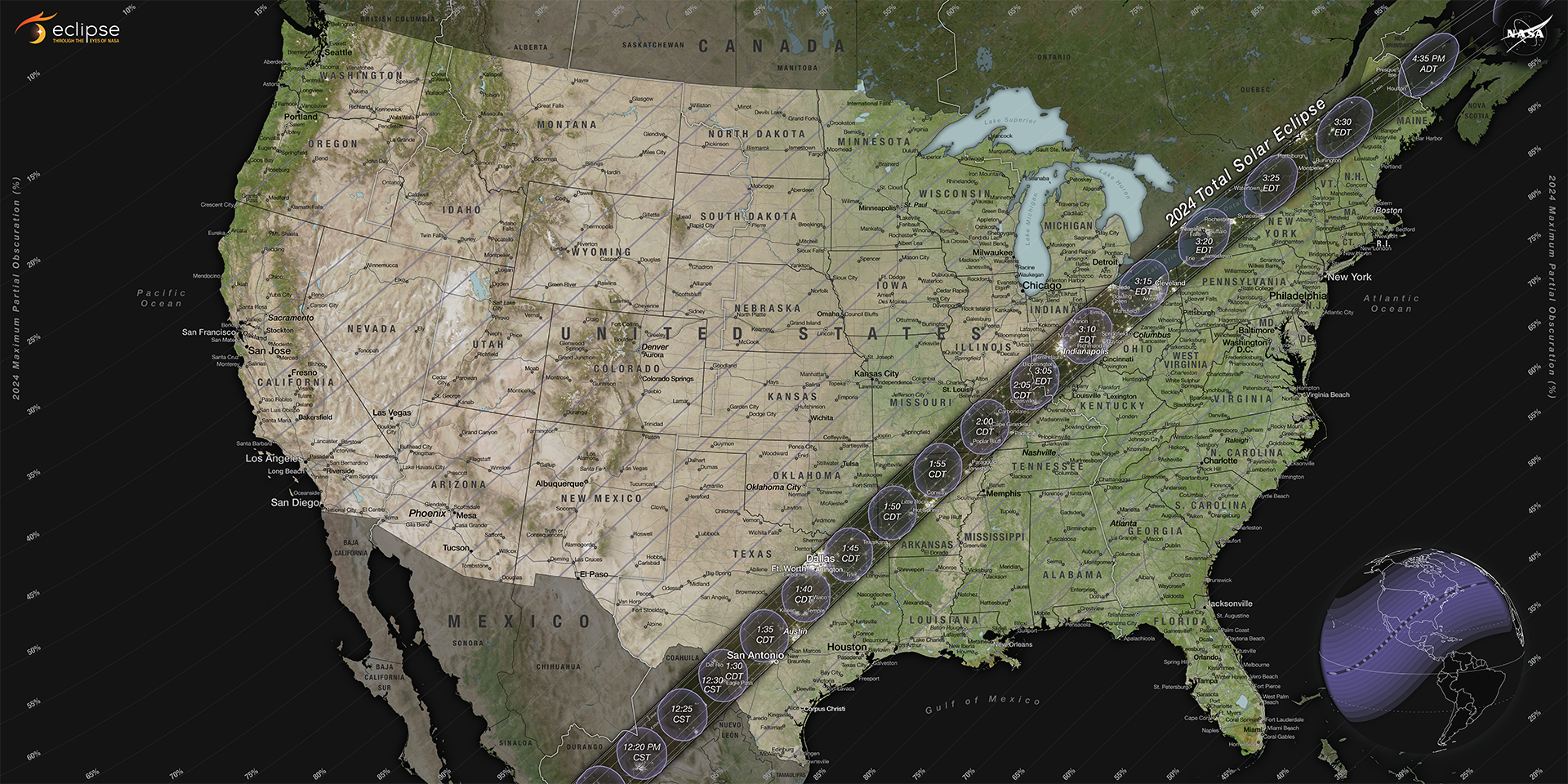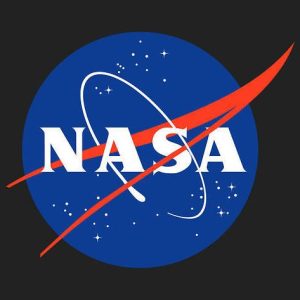35 Years Ago: STS-34 Sends Galileo on its Way to Jupiter
On Oct. 18, 1989, space shuttle Atlantis took off on its fifth flight, STS-34, from NASA’s Kennedy Space Center (KSC) in Florida. Its five-person crew of Commander Donald E. Williams, Pilot Michael J. McCulley, and Mission Specialists Shannon W. Lucid, Franklin R. Chang-Díaz, and Ellen S. Baker flew a five-day mission that deployed the Galileo […]
On Oct. 18, 1989, space shuttle Atlantis took off on its fifth flight, STS-34, from NASA’s Kennedy Space Center (KSC) in Florida. Its five-person crew of Commander Donald E. Williams, Pilot Michael J. McCulley, and Mission Specialists Shannon W. Lucid, Franklin R. Chang-Díaz, and Ellen S. Baker flew a five-day mission that deployed the Galileo spacecraft, managed by NASA’s Jet Propulsion Laboratory in Southern California, to study Jupiter. The astronauts deployed Galileo and its upper stage on their first day in space, sending the spacecraft on its six-year journey to the giant outer planet. Following its arrival at Jupiter in December 1995, Galileo deployed its atmospheric probe while the main spacecraft entered orbit around the planet, studying it in great detail for eight years.
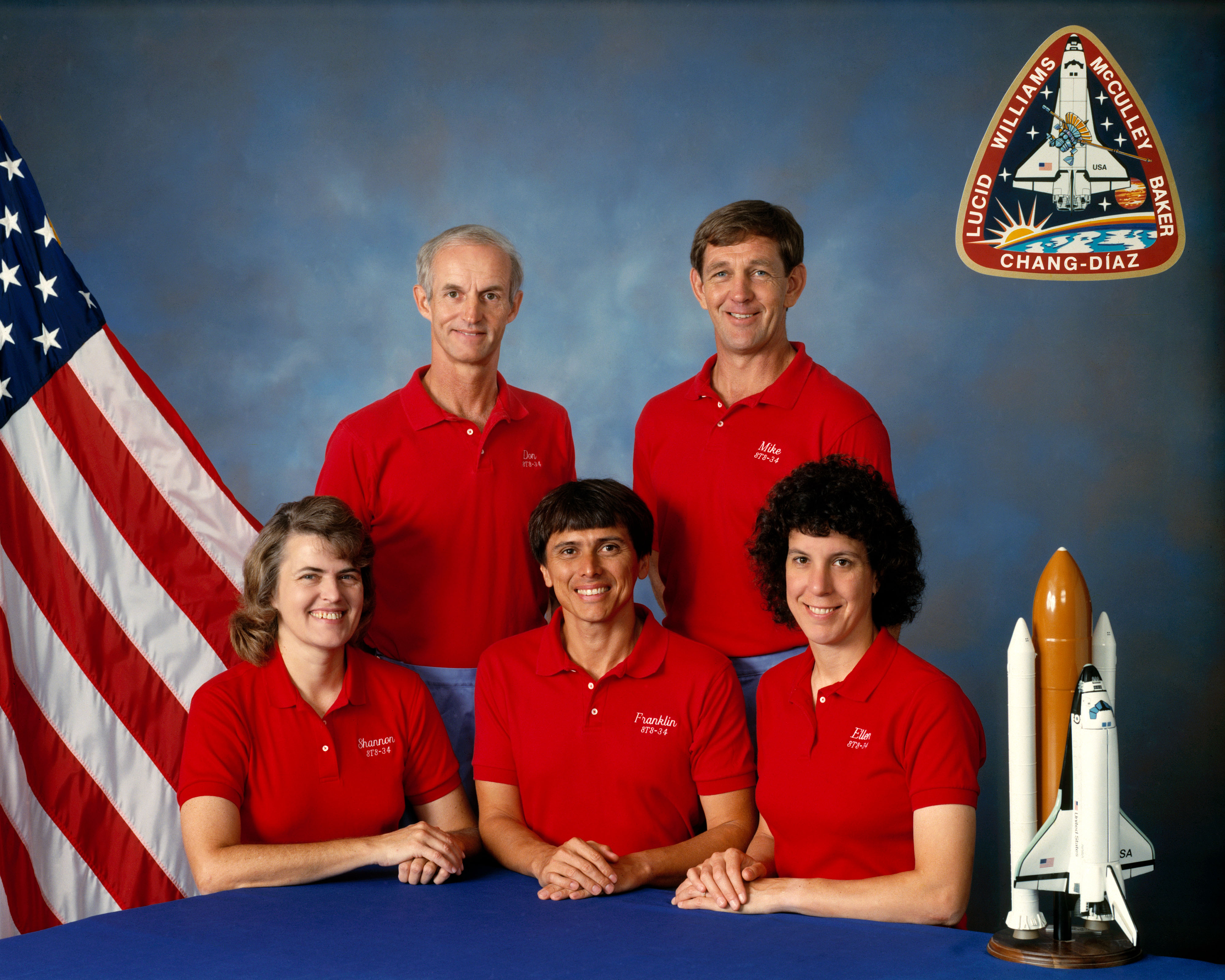
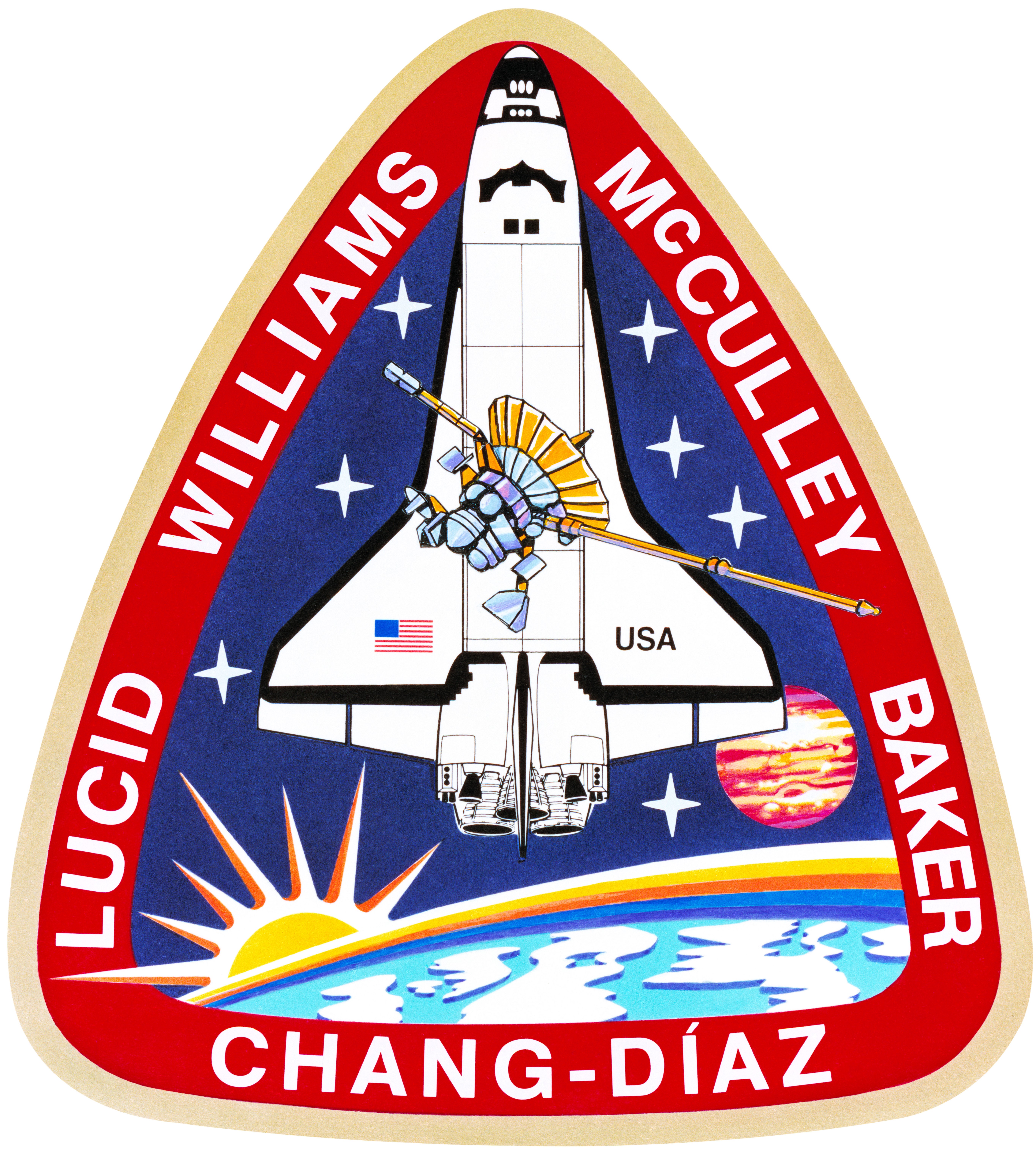
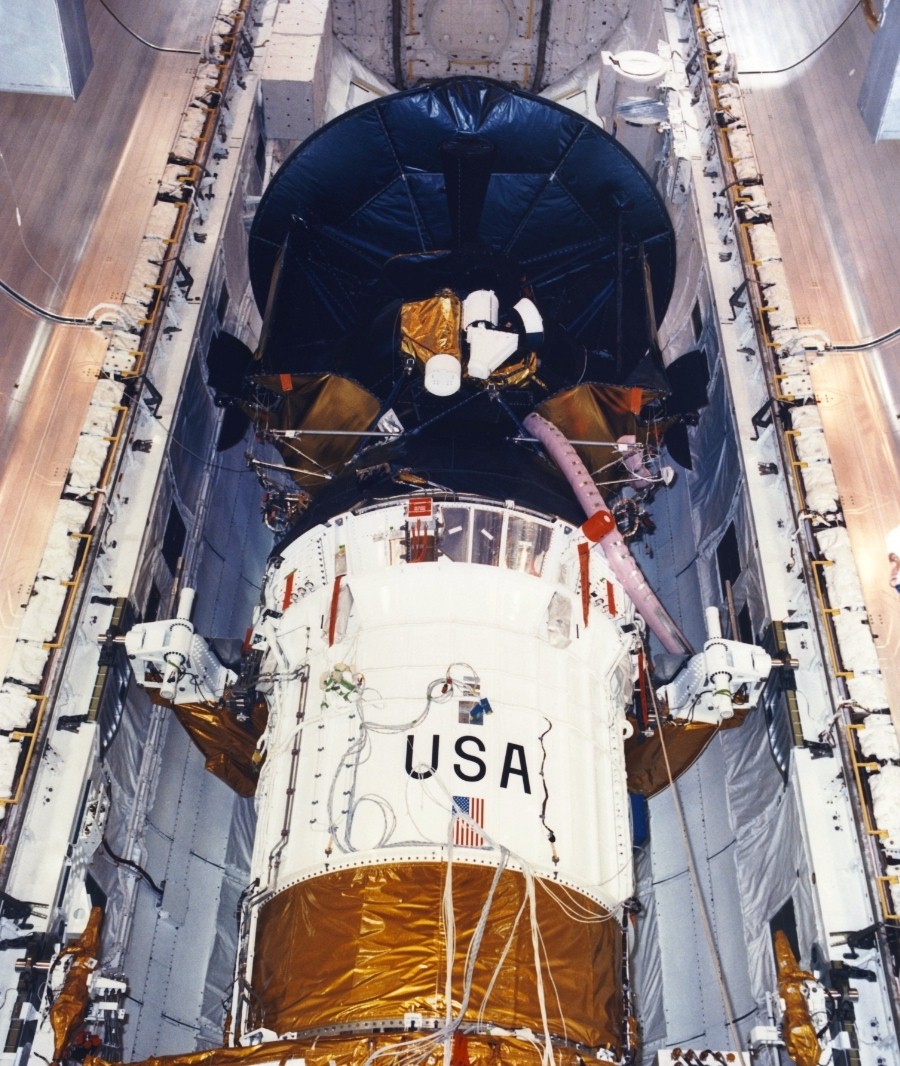
Left: The STS-34 crew of Mission Specialists Shannon W. Lucid, sitting left, Franklin R. Chang-Díaz, and Ellen S. Baker; Commander Donald E. Williams, standing left, and Pilot Michael J. McCulley. Middle: The STS-34 crew patch. Right: The Galileo spacecraft in Atlantis’ payload bay in preparation for STS-34.
In November 1988, NASA announced Williams, McCulley, Lucid, Chang-Díaz, and Baker as the STS-34 crew for the flight planned for October 1989. Williams and Lucid, both from the Class of 1978, had each flown once before, on STS-51D in April 1985 and STS-51G in June 1985, respectively. Chang-Díaz, selected in 1980, had flown once before on STS-61C in January 1986, while for McCulley and Baker, both selected in 1984, STS-34 represented their first spaceflight. During their five-day mission, the astronauts planned to deploy Galileo and its Inertial Upper Stage (IUS) on the first flight day. Following the Galileo deployment, the astronauts planned to conduct experiments in the middeck and the payload bay.
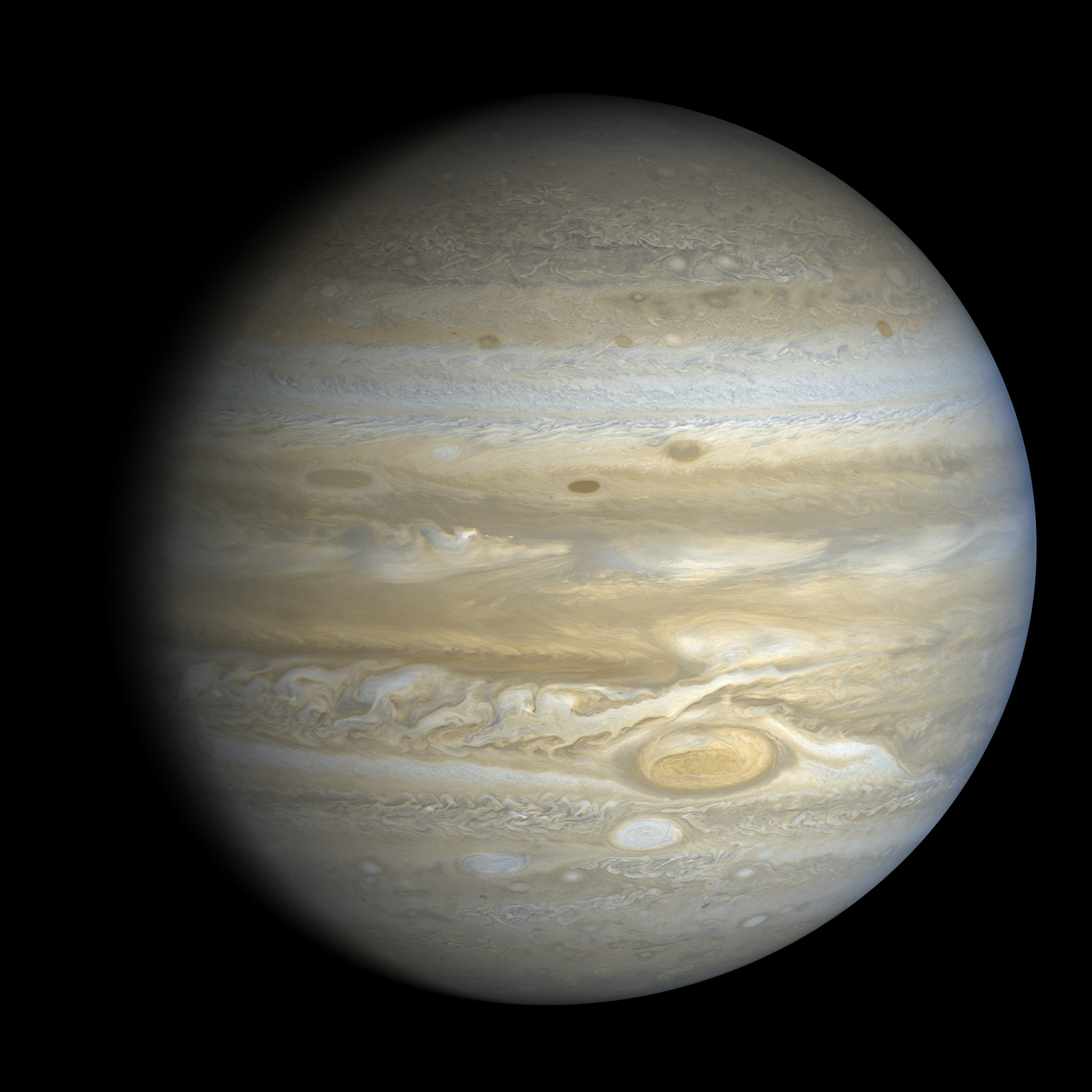
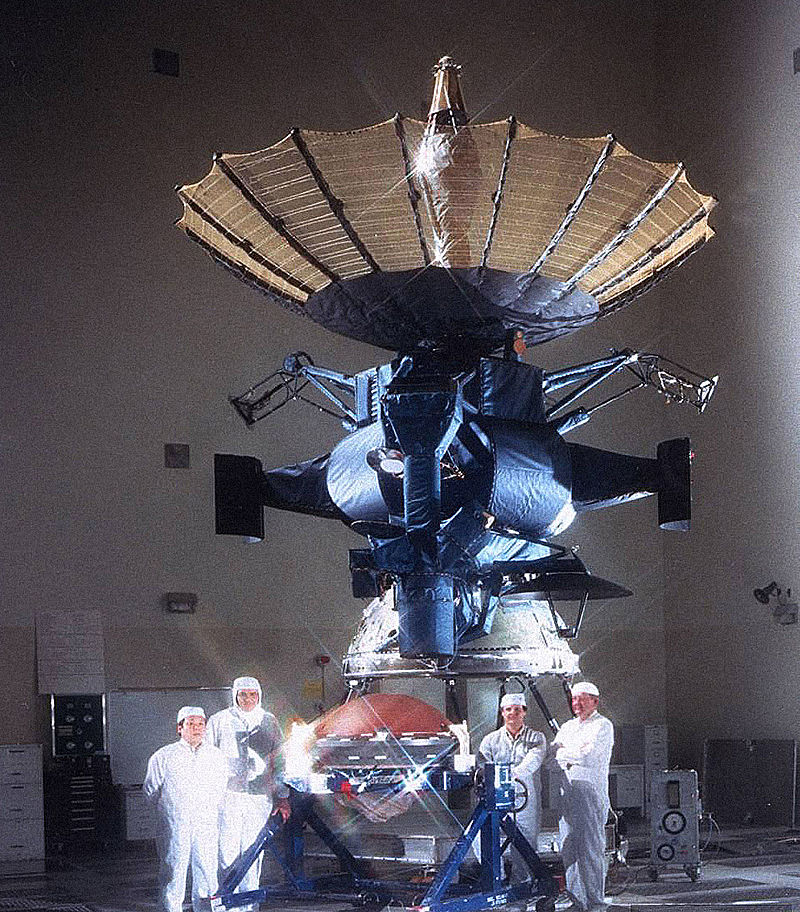

Left: Voyager 2 image of Jupiter. Middle: Galileo as it appeared in 1983. Right: Illustration of Galileo’s trajectory from Earth to Jupiter.
Following the successful Pioneer and Voyager flyby missions, NASA’s next step to study Jupiter in depth involved an ambitious orbiter and atmospheric entry probe. NASA first proposed the Jupiter Orbiter Probe mission in 1975, and Congress approved it in 1977 for a planned 1982 launch on the space shuttle. In 1978, NASA renamed the spacecraft Galileo after the 17th century Italian astronomer who turned his new telescope toward Jupiter and discovered its four largest moons. Delays in the shuttle program and changes in the upper stage to send Galileo from low Earth orbit on to Jupiter resulted in the slip of its launch to May 1986, when on Atlantis’ STS-61G mission, a Centaur upper stage would send the spacecraft toward Jupiter.
The January 1986 Challenger accident not only halted shuttle flights for 31 months but also canceled the Centaur as an upper stage for the orbiter. Remanifested onto the less powerful IUS, Galileo would require gravity assist maneuvers at Venus and twice at Earth to reach its destination, extending the transit time to six years. Galileo’s launch window extended from Oct. 12 to Nov. 21, 1989, dictated by planetary alignments required for the gravity assists. During the transit, Galileo had the opportunity to pass by two main belt asteroids, providing the first closeup study of this class of objects. Upon arrival at Jupiter, Galileo would release its probe to return data as it descended through Jupiter’s atmosphere while the main spacecraft would enter an elliptical orbit around the planet, from which it would conduct in depth studies for a minimum of 22 months.
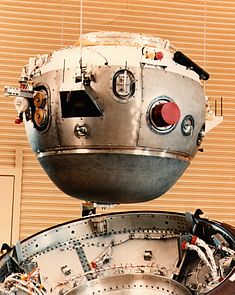
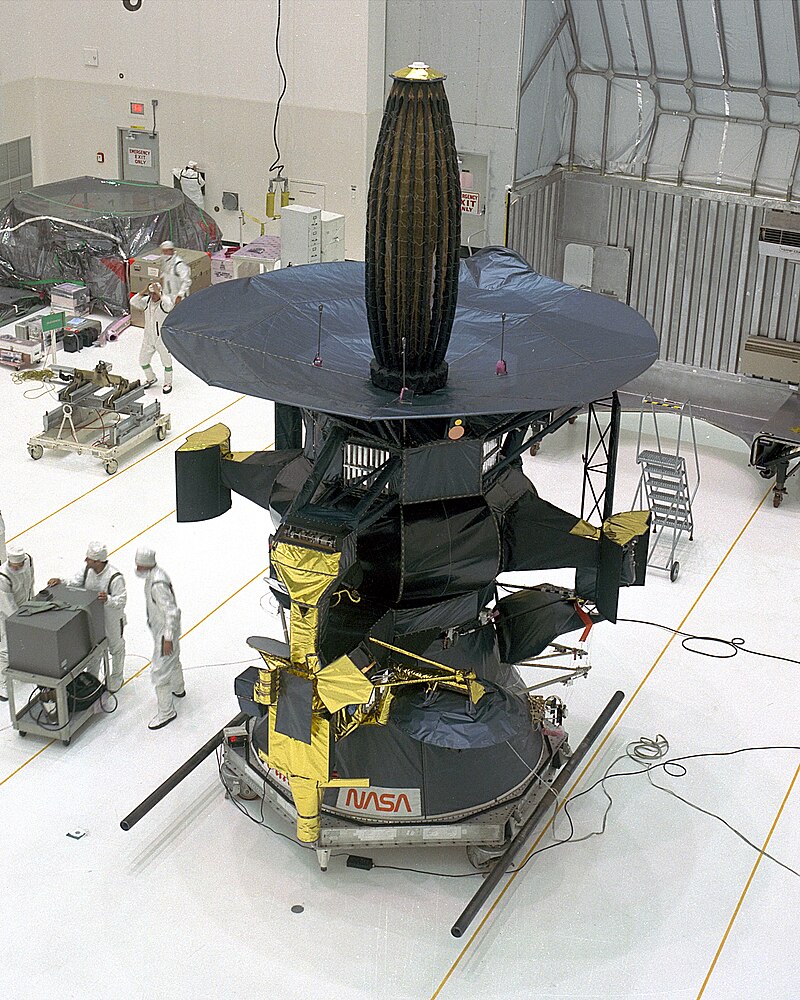

Left: The Galileo atmospheric probe during preflight processing. Middle: The Galileo orbiter during preflight processing. Right: Space shuttle Atlantis arrives at Launch Pad 39B.
The Galileo atmospheric probe arrived at KSC on April 17 and the main spacecraft on May 16, following which workers joined the two together for preflight testing. Meanwhile, Atlantis returned to KSC on May 15, following the STS-30 mission that deployed the Magellan spacecraft to Venus. The next day workers towed it into the Orbiter Processing Facility to prepare it for STS-34. In KSC’s Vehicle Assembly Building (VAB), workers began stacking the Solid Rocket Boosters (SRB) on June 15, completing the activity on July 22, and then adding the External Tank (ET) on July 30. Atlantis rolled over to the VAB on Aug. 22 for mating with the ET and SRBs. Galileo, now mated to its IUS, transferred to Launch Pad 39B on Aug. 25, awaiting Atlantis’ arrival four days later.
The next day, workers placed Galileo into Atlantis’ payload bay and began preparations for the Oct. 12 launch. The Terminal Countdown Demonstration Test took place on Sept. 14-15, with the astronauts participating in the final few hours as on launch day. A faulty computer aboard the IUS threatened to delay the mission, but workers replaced it without impacting the planned launch date. The five-member astronaut crew arrived at KSC Oct. 9 for final preparations for the flight and teams began the countdown for launch. A main engine controller problem halted the countdown at T minus 19 hours. The work required to replace it pushed the launch date back to Oct. 17. On that day, the weather at the pad supported a launch, but clouds and rain at the Shuttle Landing Facility several miles away, and later rain at a Transatlantic (TAL) abort site, violated launch constraints, so managers called a 24-hour scrub. The next day, the weather cooperated at all sites, and other than a brief hold to reconfigure Atlantis’ computers from one TAL site to another, the countdown proceeded smoothly.

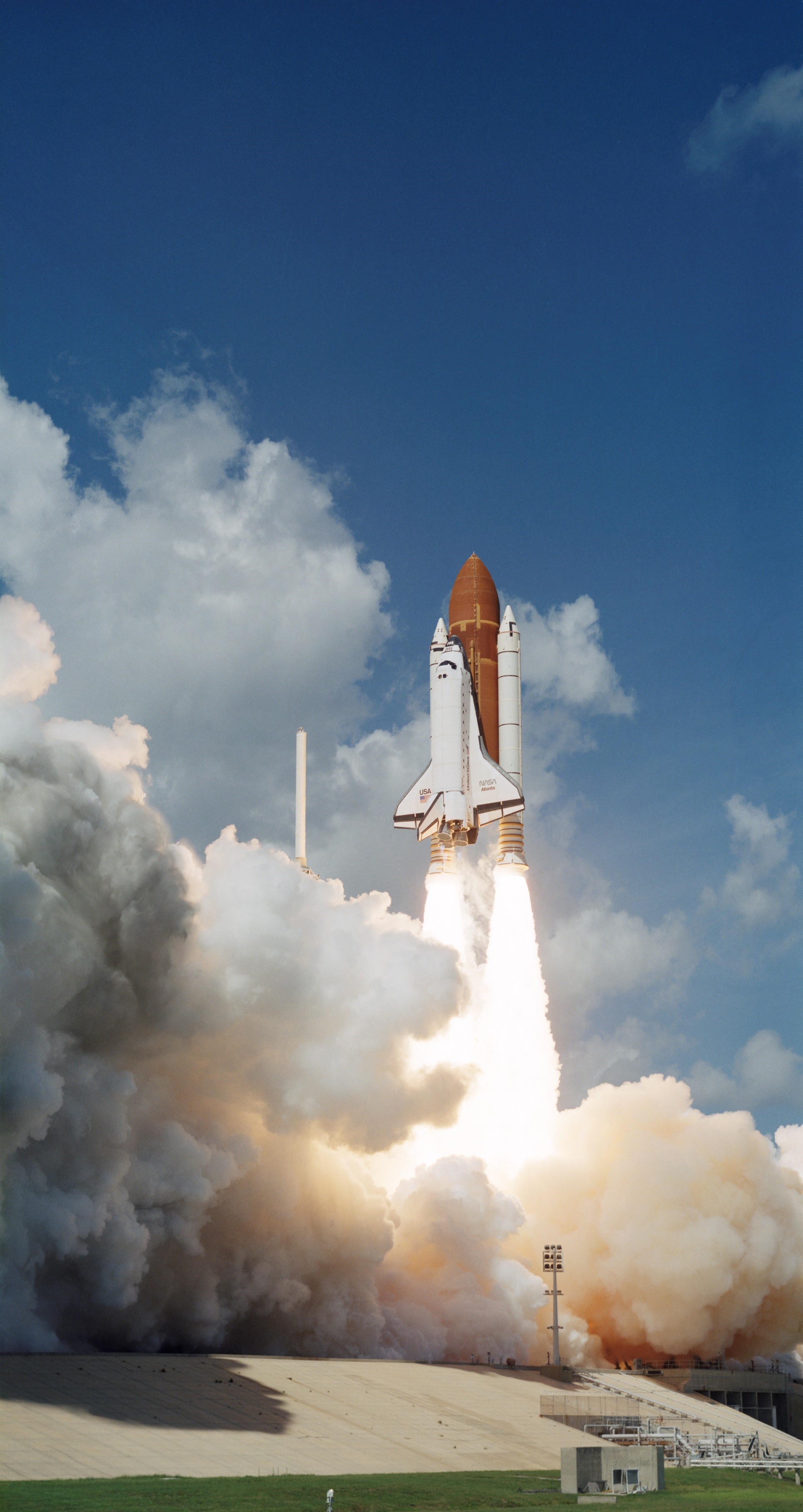
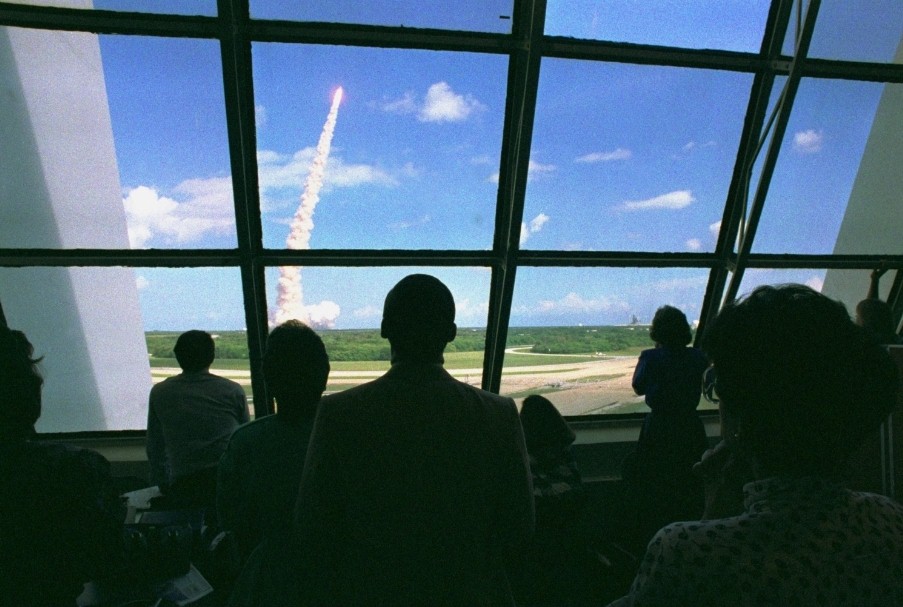
Left: STS-34 astronauts pose following their Sept. 6 preflight press conference. Middle: Liftoff of Atlantis on the STS-34 mission. Right: Controllers in the Firing Room watch Atlantis take to the skies.
Atlantis lifted off Launch Pad 39B at 12:53 p.m. EDT on Oct. 18. As soon as the shuttle cleared the launch tower, control shifted to the Mission Control Center at NASA’s Johnson Space Center in Houston, where Ascent Flight Director Ronald D. Dittemore and his team of controllers, including astronaut Frank L. Culbertson serving as the capsule communicator, or capcom, monitored all aspects of the launch. Following main engine cutoff, Atlantis and its crew had achieved orbit. Forty minutes later, a firing of the two Orbital Maneuvering System (OMS) engines circularized the orbit at 185 miles. The astronauts removed their bulky Launch and Entry Suits (LES) and prepared Atlantis for orbital operations, including opening the payload bay doors.
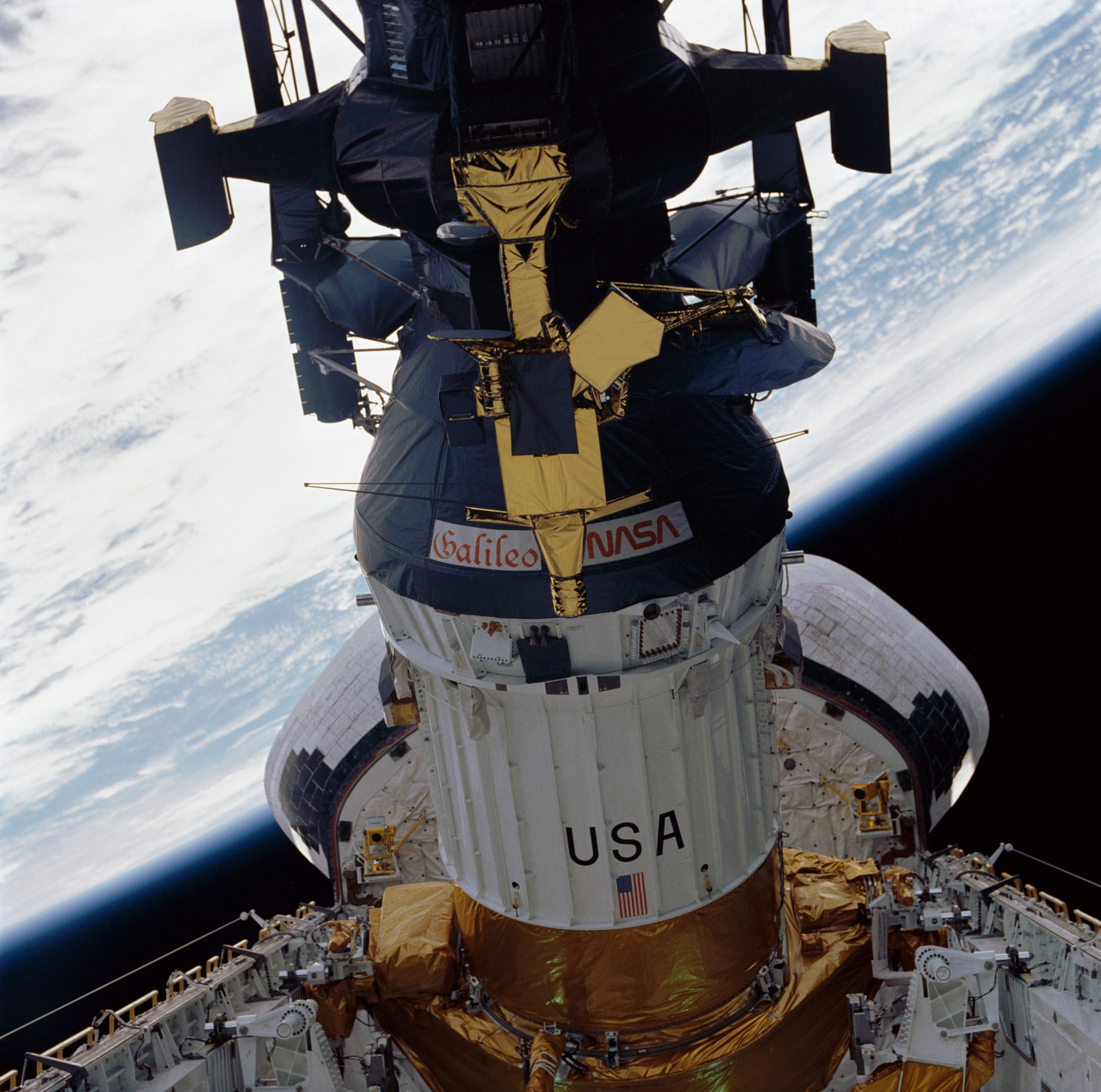
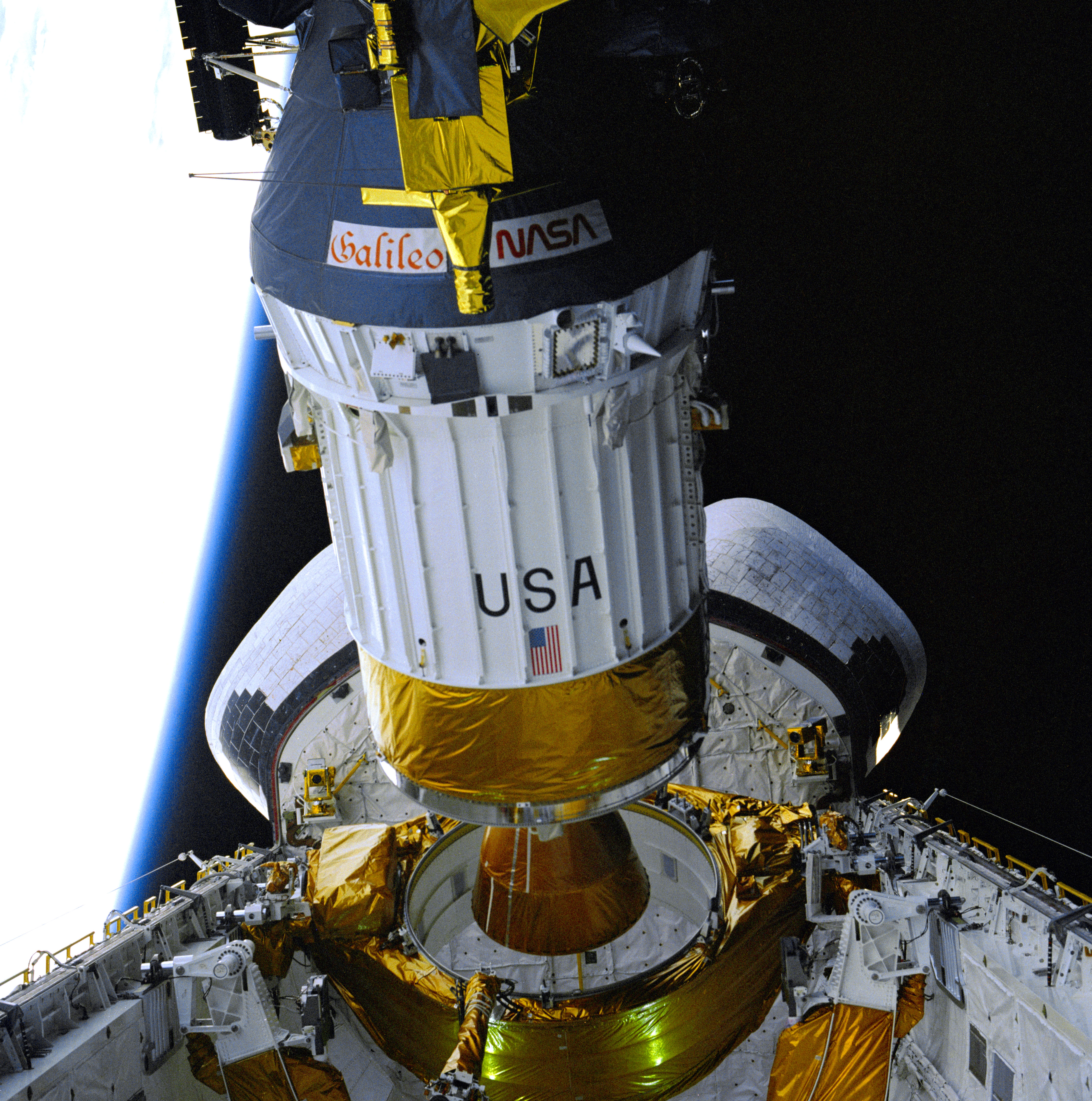
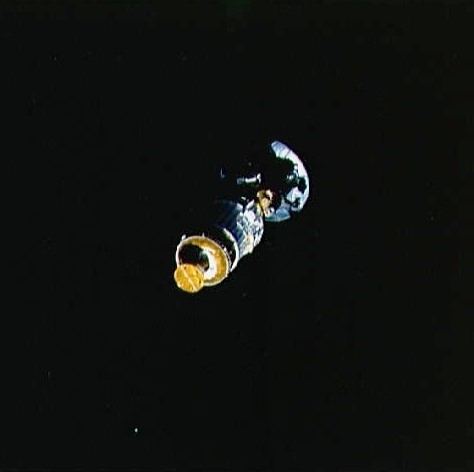
Left: Galileo and its Inertial Upper Stage (IUS) in Atlantis’ payload bay, just before deployment. Middle: Galileo and its IUS moments after deployment. Right: Galileo departs from the shuttle.
Preparations for Galileo’s deployment began shortly thereafter. In Mission Control, Flight Director J. Milton Heflin and his team, including capcom Michael A. Baker, took over to assist the crew with deployment operations. The astronauts activated Galileo and the IUS, and ground teams began checking out their systems, with the first TV from the mission showing the spacecraft and its upper stage in the payload bay. Lucid raised Galileo’s tilt table first to 29 degrees, McCulley oriented Atlantis to the deployment attitude, then Lucid raised the tilt table to the deploy position of 58 degrees. With all systems operating normally, Mission Control gave the go for deploy.
Six hours and 20 minutes into the mission, Lucid deployed the Jupiter-bound spacecraft and its upper stage, weighing a combined 38,483 pounds. “Galileo is on its way to another world,” Williams called down. The combination glided over the shuttle’s crew compartment. Williams and McCulley fired the two OMS engines to move Atlantis a safe distance away from the IUS burn that took place one hour after deployment, sending Galileo on its circuitous journey through the inner solar system before finally heading to Jupiter. The primary task of the mission accomplished, the astronauts prepared for their first night’s sleep in space.
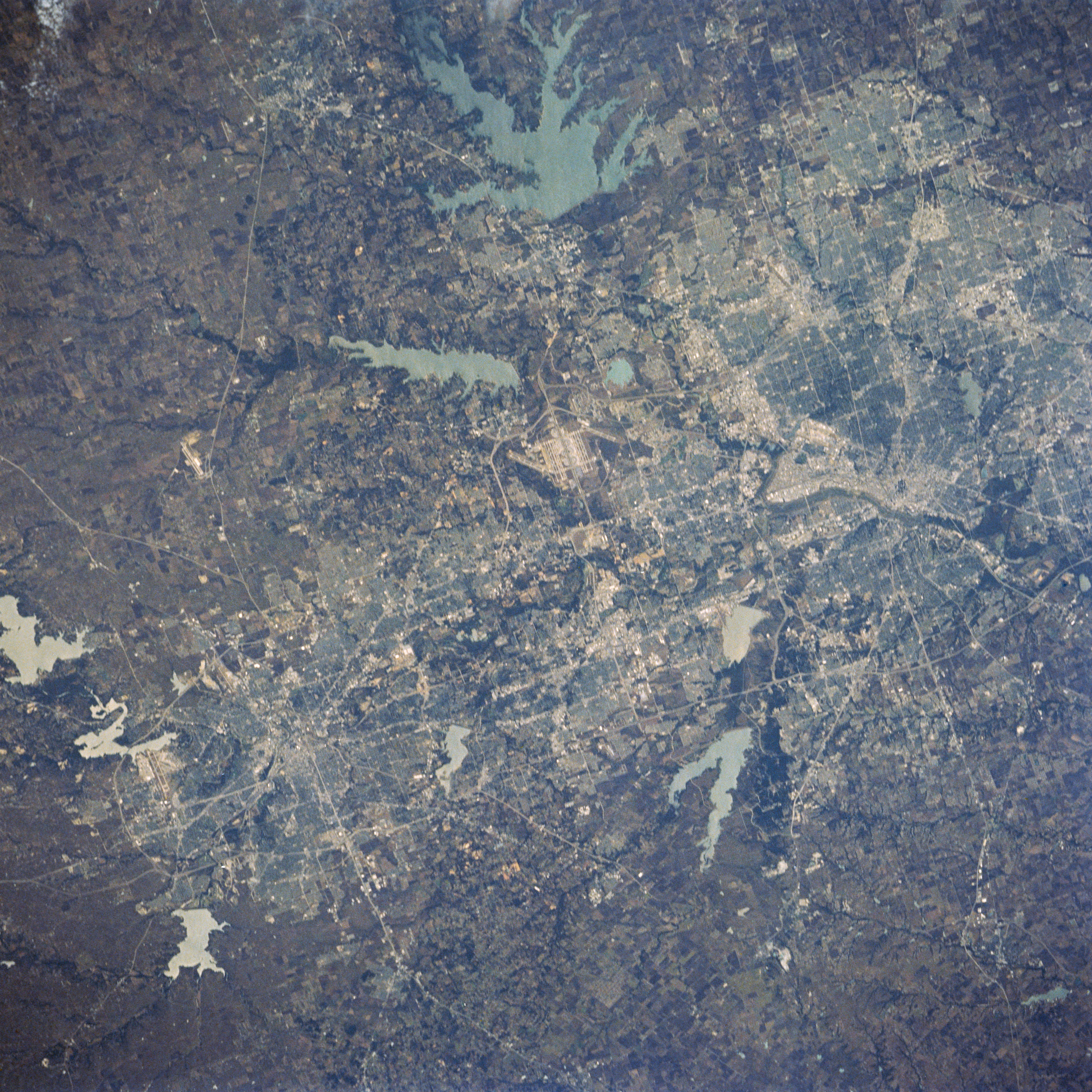
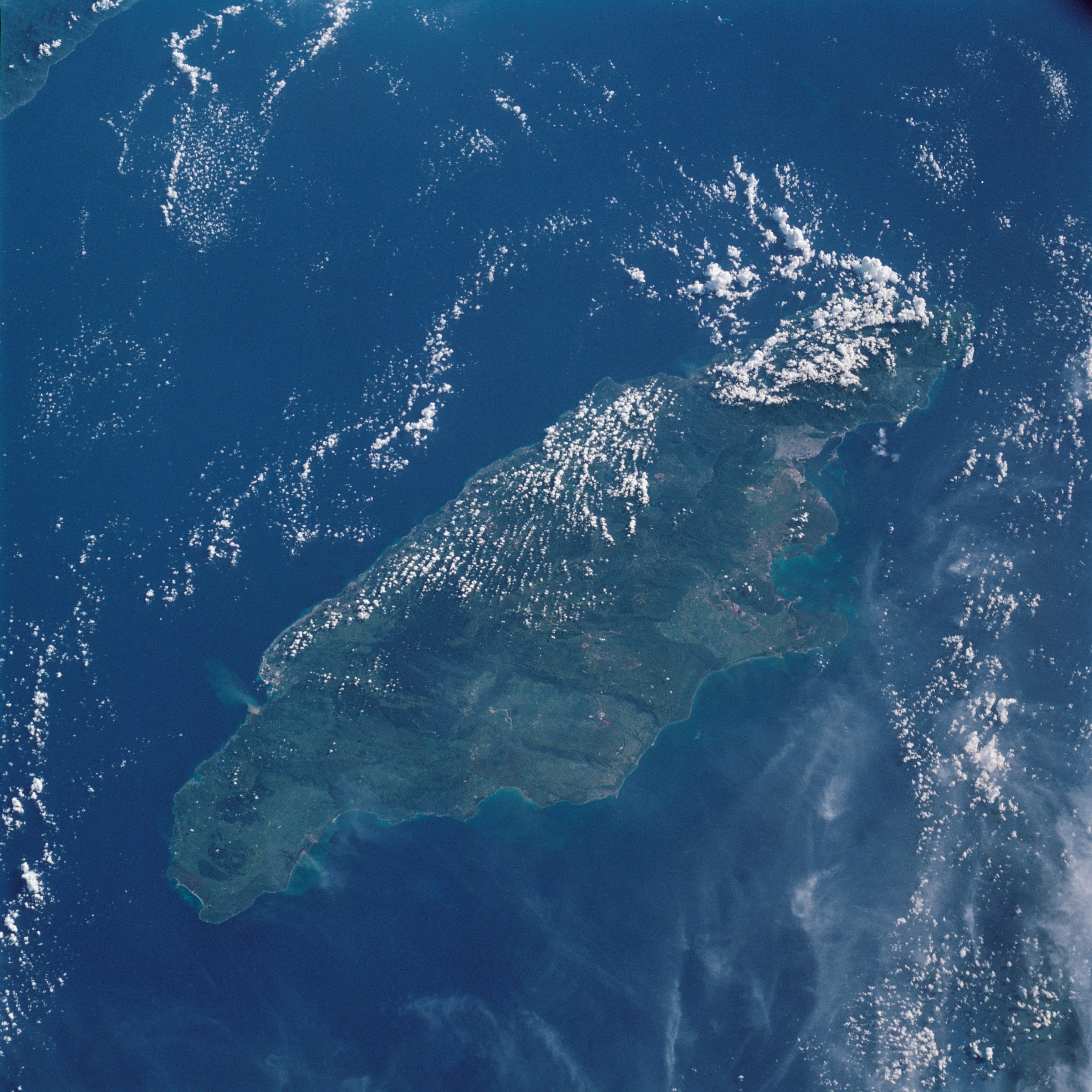

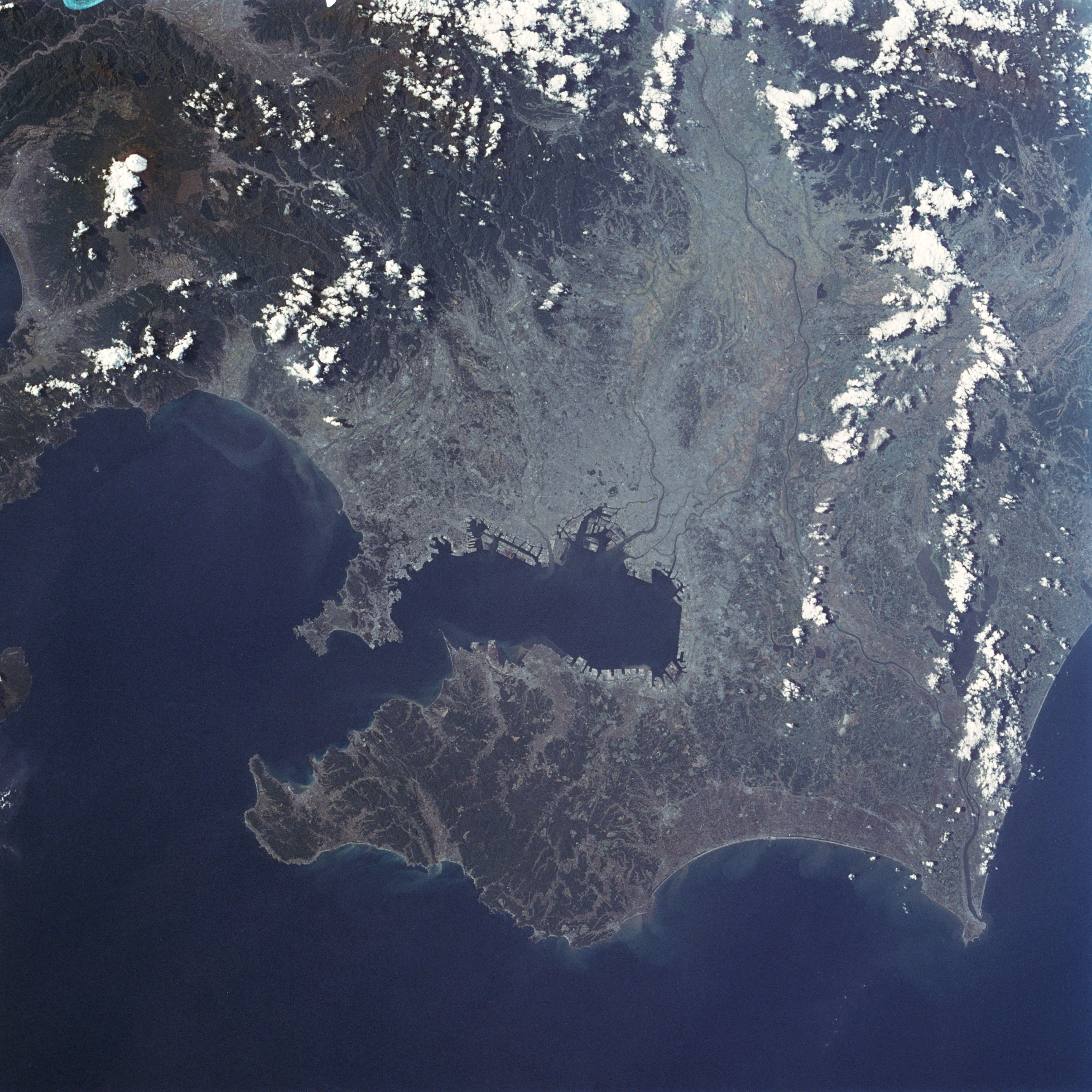
STS-34 crew Earth observation photographs. Left: The Dallas-Ft. Worth Metroplex. Middle left: Jamaica. Middle right: Greece. Right: The greater Tokyo area with Mt. Fuji at upper left.
For the next three days, the STS-34 astronauts focused their attention on the middeck and payload bay experiments, as well as taking photographs of the Earth. Located in the payload bay, the Shuttle Solar Backscatter Ultraviolet experiment, managed by NASA’s Goddard Space Flight Center in Greenbelt, Maryland, measured ozone in the Earth’s atmosphere and compared the results with data obtained by weather satellites at the same locations. The comparisons served to calibrate the weather satellite instruments. Baker conducted the Growth Hormone Concentrations and Distributions in Plants experiment, that investigated the effect of the hormone Auxin in corn shoot tissue. Three days into the mission, she placed plant canisters into a freezer to arrest plant growth and for postflight analysis. Chang-Díaz and Lucid had prime responsibility for the Polymer Morphology experiment, developed by the 3M Company. They used a laptop to control experiment parameters as the hardware melted different samples to see the effects of weightlessness. Baker conducted several medical investigations, including studying blood vessels in the retina, changes in leg volume due to fluid shifts, and carotid blood flow.
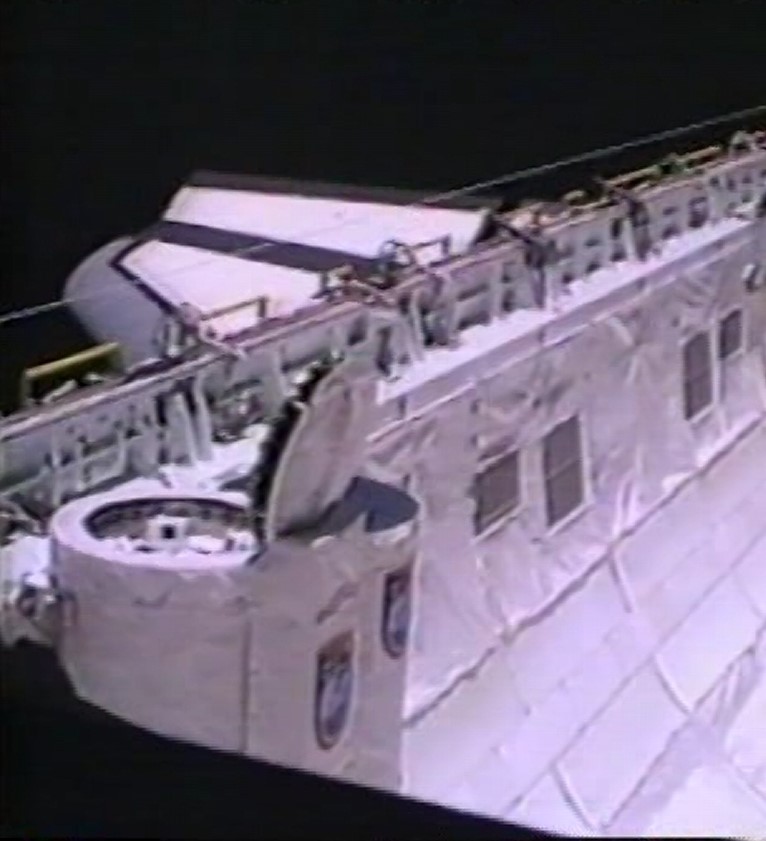


Left: The Shuttle Solar Backscatter Ultraviolet experiment in Atlantis’ payload bay. Middle: Ellen S. Baker, right, performs a carotid blood flow experiment on Franklin R. Chang-Díaz. Right: Chang-Díaz describes the Polymer Mixing experiment.
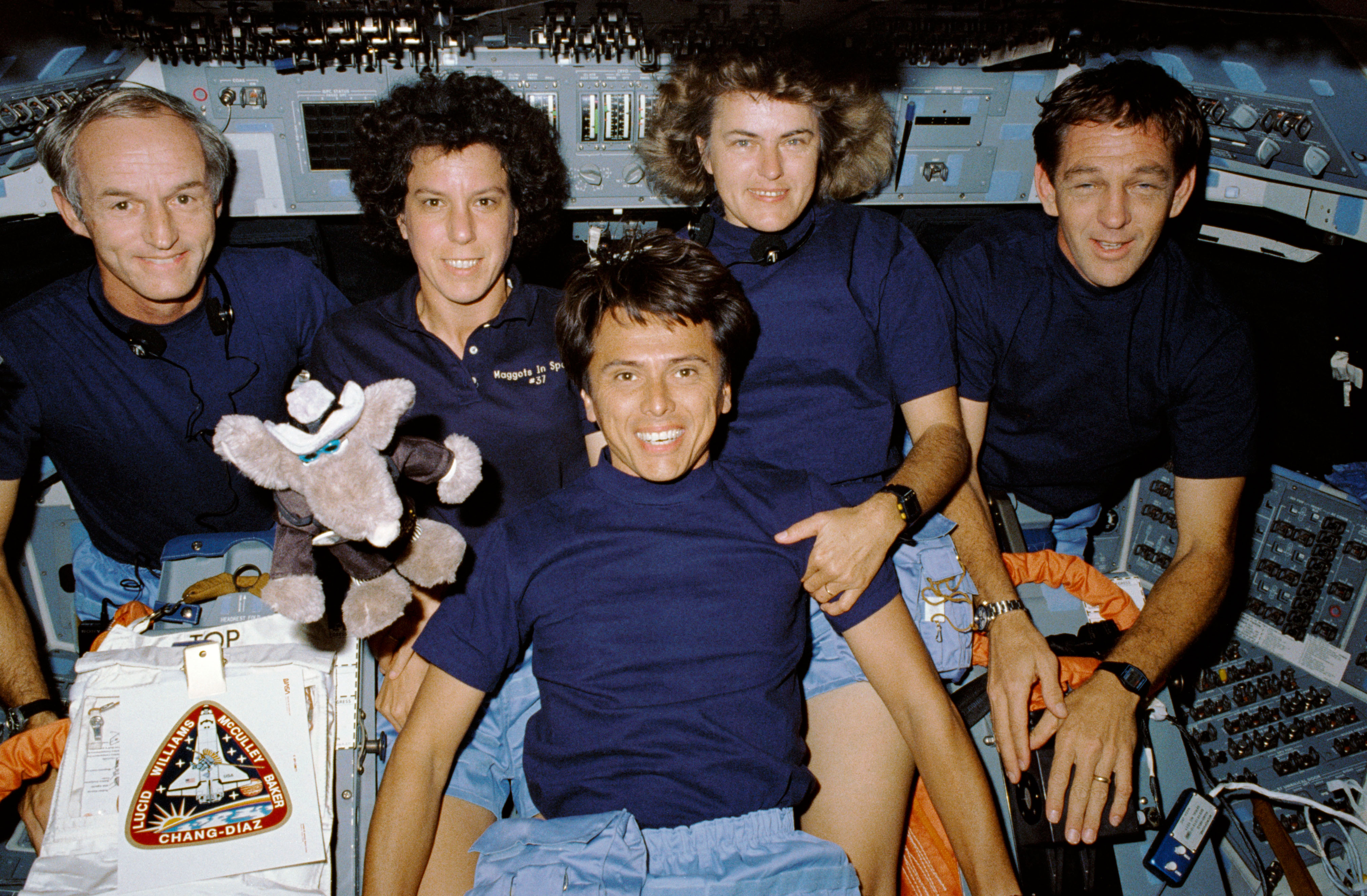
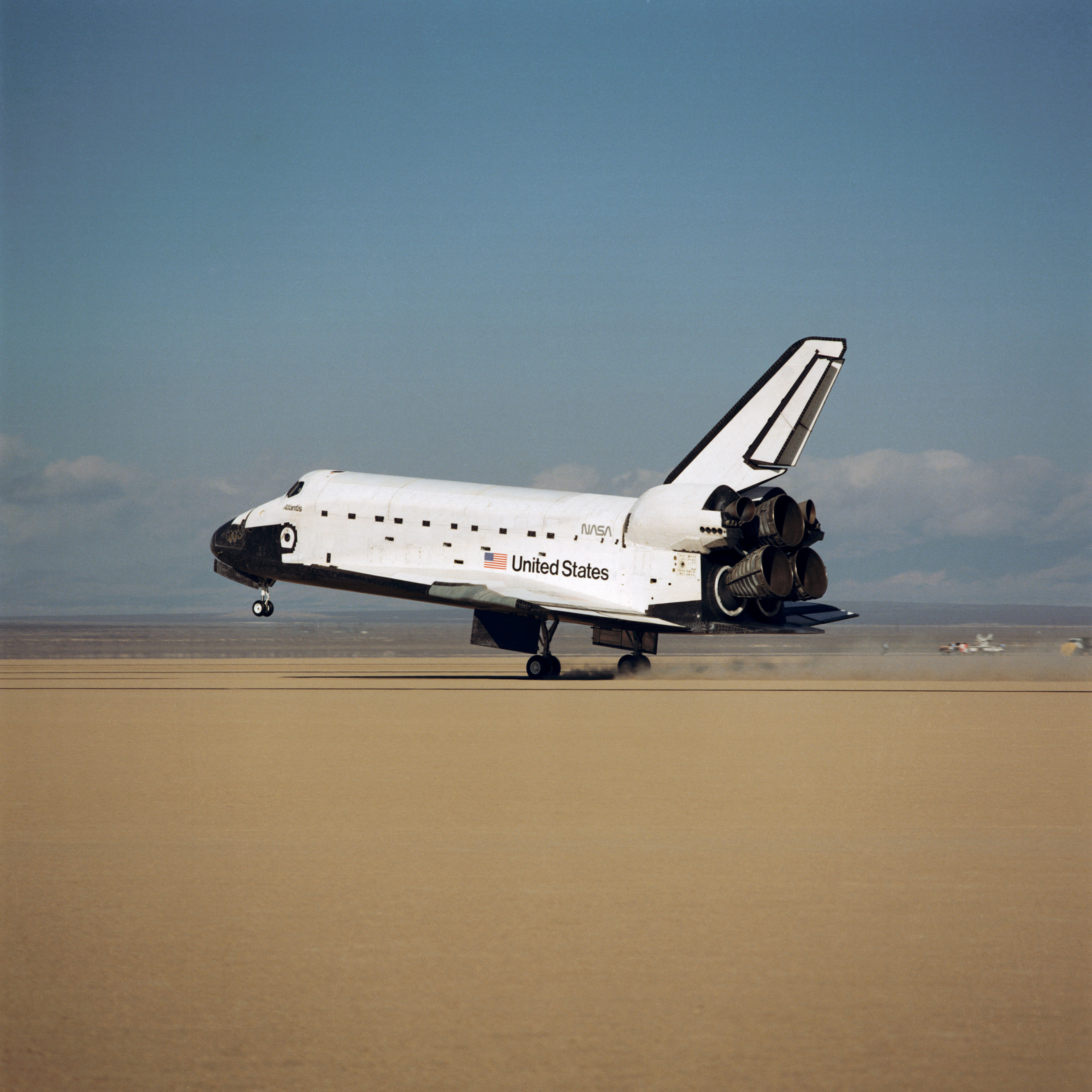
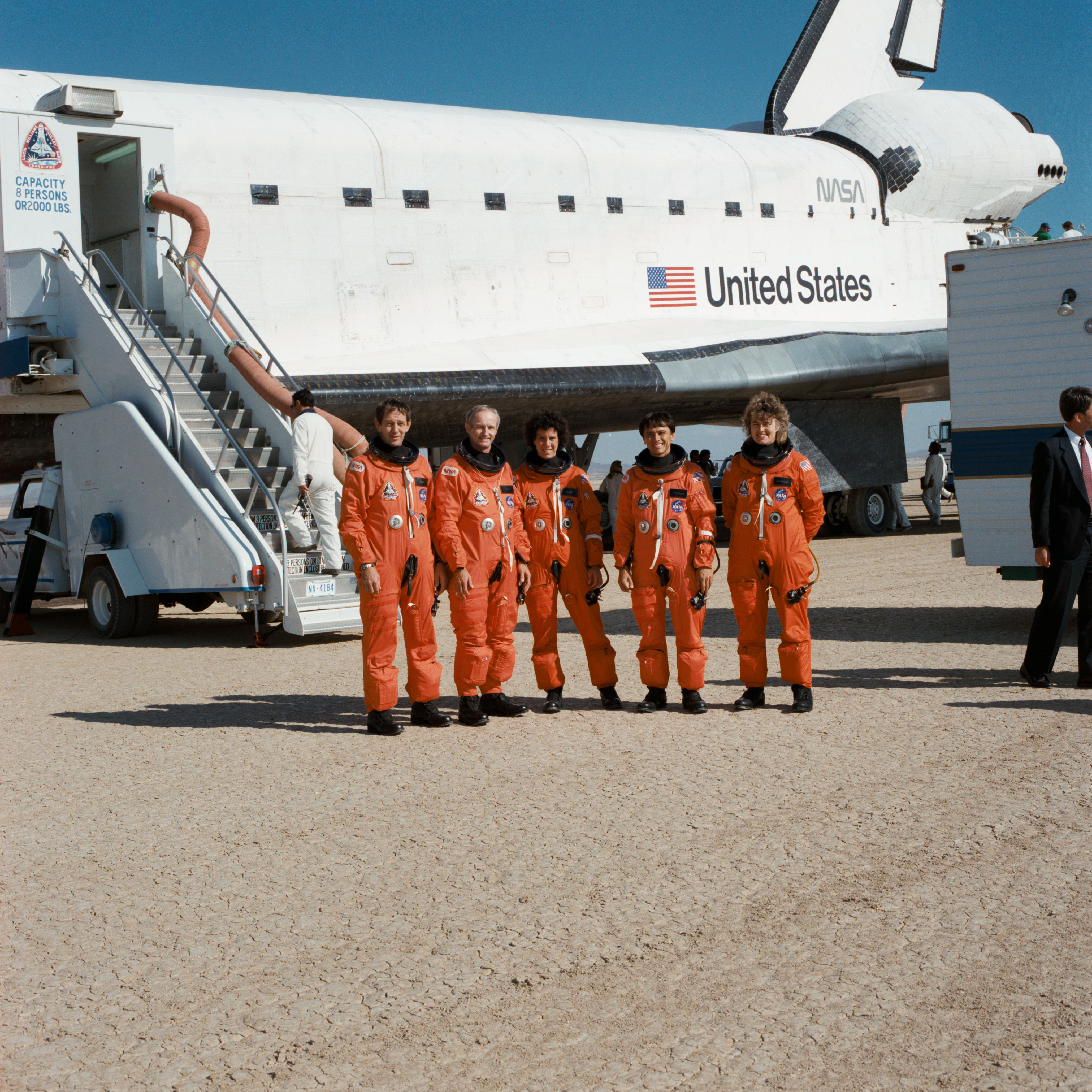
Left: The STS-34 crew poses on Atlantis’ fight deck. Middle: Atlantis touches down at Edwards Air Force Base in California. Right: The STS-34 astronauts pose in front of Atlantis.
On Oct. 23, the astronauts awakened for their final day in space. Because of high winds expected at the primary landing site at Edwards Air Force Base (AFB), managers moved the landing up by two revolutions. In preparation for reentry, the astronauts donned their orange LESs and closed the payload bay doors. Williams and McCulley oriented Atlantis into the deorbit attitude, with the OMS engines facing in the direction of travel. Over the Indian Ocean, they fired the two engines for 2 minutes 48 seconds to bring the spacecraft out of orbit. They reoriented the orbiter to fly with its heat shield exposed to the direction of flight as it encountered Earth’s atmosphere at 419,000 feet. The buildup of ionized gases caused by the heat of reentry prevented communications for about 15 minutes but provided the astronauts a great light show. The entry profile differed slightly from the planned one because Atlantis needed to make up 500 miles of cross range since it returned two orbits early. After completing the Heading Alignment Circle turn, Williams aligned Atlantis with the runway, and McCulley lowered the landing gear. Atlantis touched down and rolled to a stop, ending a 4-day 23-hour 39-minute flight, having completed 79 orbits of the Earth. Following postlanding inspections, workers placed Atlantis atop a Shuttle Carrier Aircraft, a modified Boeing-747, and the combination left Edwards on Oct. 28. Following refueling stops at Biggs Army Airfield in Texas and Columbus AFB in Mississippi, Atlantis and the SCA arrived back at KSC on Oct. 29. Workers began to prepare it for its next flight, STS-36 in February 1990.
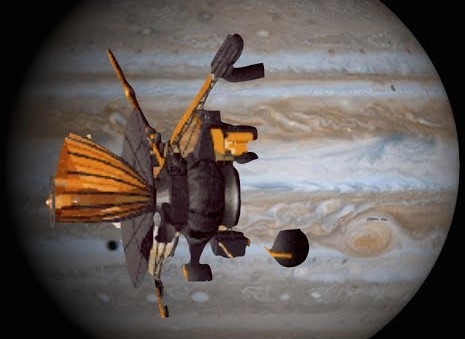
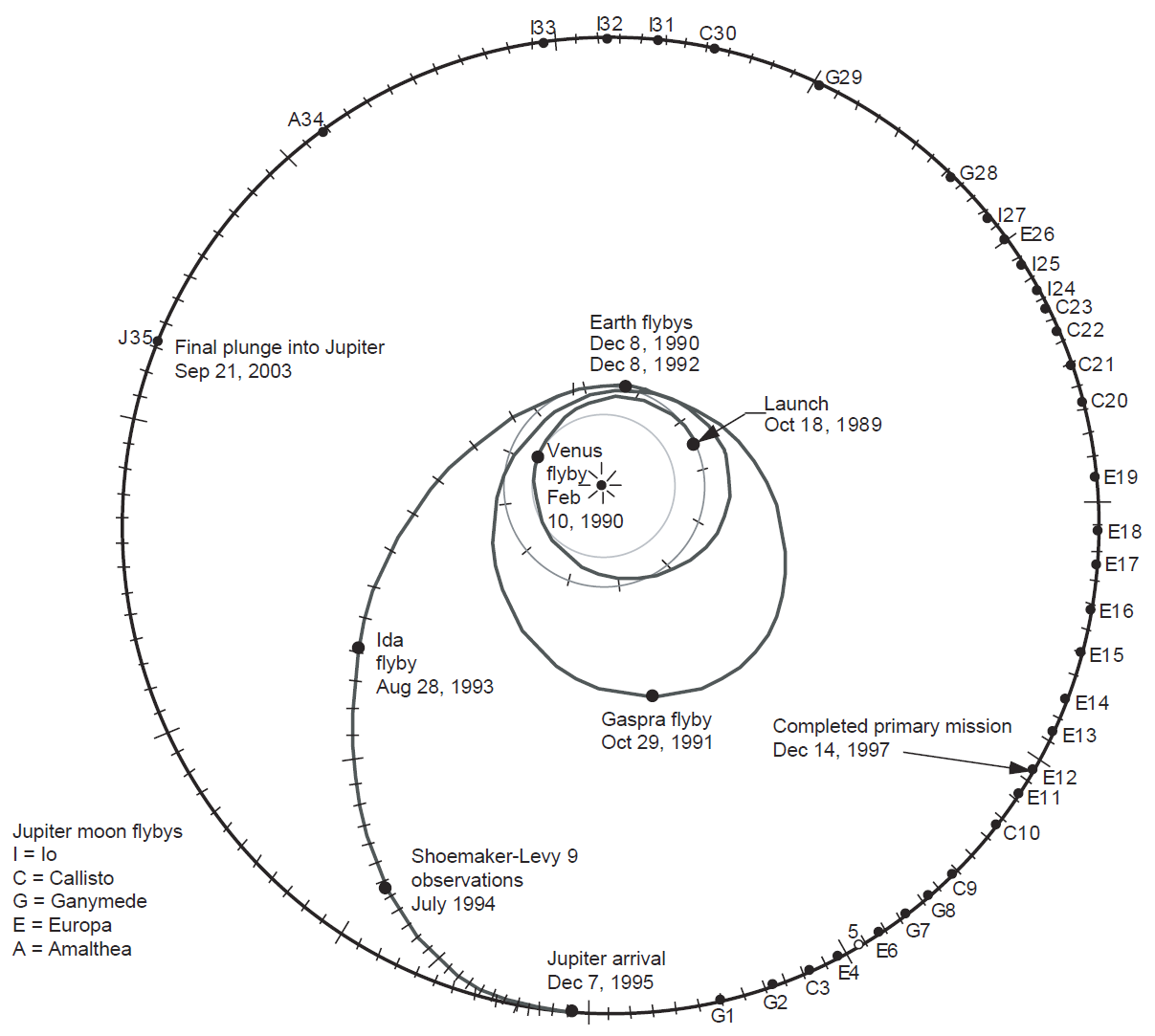
Left: An illustration of Galileo in orbit around Jupiter. Right: Galileo’s major mission events, including encounters with Jupiter’s moons during its eight-year orbital study.
One hour after deployment from Atlantis, the IUS ignited to send Galileo on its six-year journey to Jupiter, with the spacecraft flying free of the rocket stage 47 minutes later. The spacecraft’s circuitous path took it first to Venus on Feb. 10, 1990, back to Earth on Dec. 8, 1990, and again on Dec. 8, 1992, each time picking up velocity from the gravity assist to send it on to the giant planet. Along the way, Galileo also passed by and imaged the main belt asteroids Gaspra and Ida and observed the crash of Comet Shoemaker-Levy 9 onto Jupiter. On Dec. 7, 1995, the probe plummeted through Jupiter’s dense atmosphere, returning data along the way, until it succumbed to extreme pressures and temperatures. Meanwhile, Galileo entered orbit around Jupiter and far exceeded its 22-month primary mission, finally plunging into the giant planet on Sept. 21, 2003, 14 years after leaving Earth. During its 35 orbits around Jupiter, it studied not only the planet but made close observations of many of its moons, especially its four largest ones, Ganymede, Callisto, Europa, and Io.
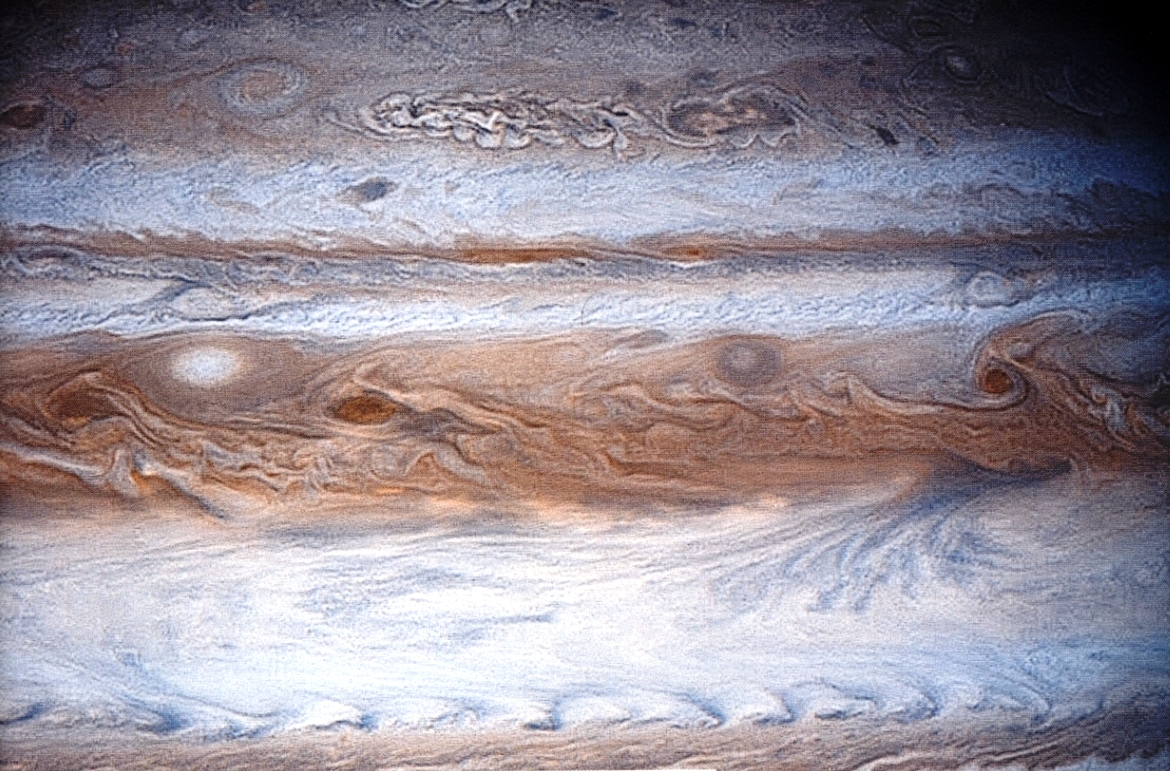
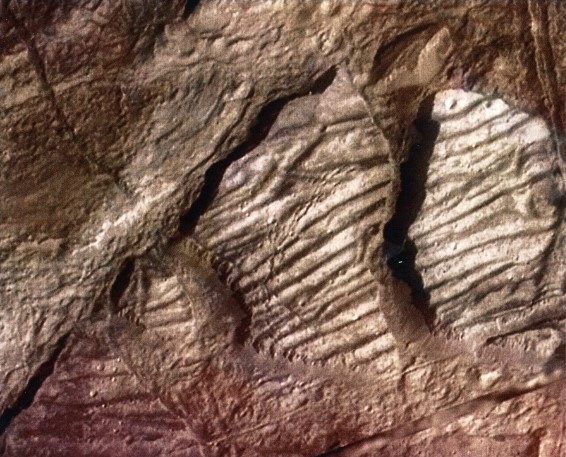
Left: Galileo image of could formations on Jupiter. Right: Closeup image of terrain on Europa.
Of particular interest to many scientists, Galileo made 11 close encounters with icy Europa, coming as close as 125 miles, revealing incredible details about its surface. Based on Galileo data, scientists now believe a vast ocean lies beneath Europa’s icy crust, and heating from inside the moon may produce conditions favorable for supporting life. NASA’s Europa Clipper, launched on Oct. 14, 2024, hopes to expand on Galileo’s observations when it reaches Jupiter in April 2030.
Enjoy the crew narrated video of the STS-34 mission. Read Williams‘ recollections of the STS-34 mission in his oral history with the JSC History Office.
What's Your Reaction?



















.jpg?#)























